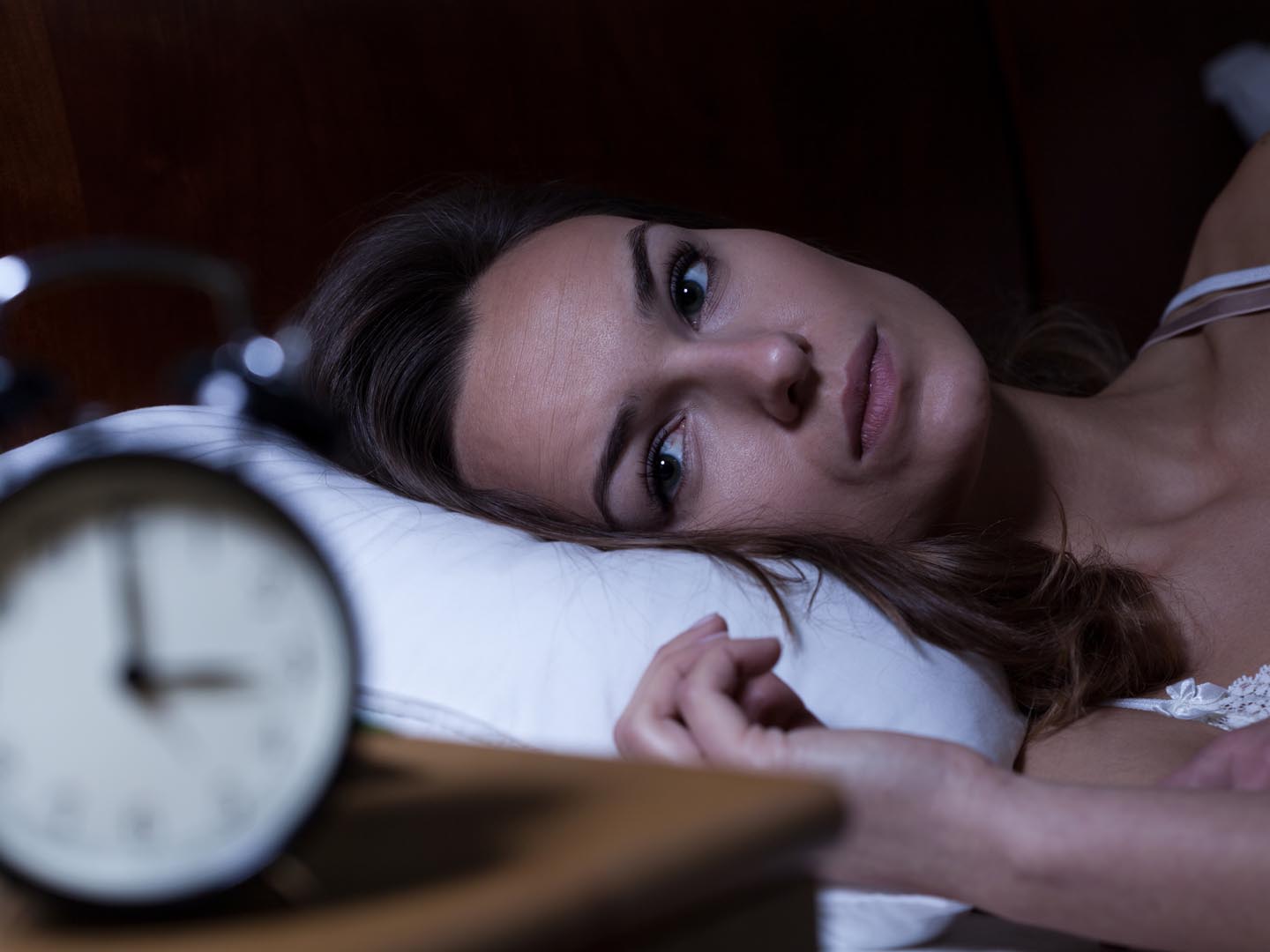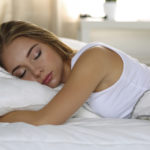Narcolepsy

What is narcolepsy?
Narcolepsy is a sleep disorder characterized by suddenly and uncontrollably falling asleep during normal waking hours. It affects males and females alike, with the age of onset typically in the early teens to mid-twenties (although it can appear at any age). The American Sleep Association estimates that 125,000 to 200,000 Americans suffer from narcolepsy; however, it is thought that less than 50,000 of these individuals get adequately diagnosed and treated.
What are the symptoms?
Narcolepsy is thought to be a result of aberrant regulation of Rapid-Eye Movement (REM) sleep, a stage of normal sleeping during which the eyes are in almost continuous motion beneath closed lids. The normal sleep cycle occurs as the sun goes down and is marked by progressive levels of sedation with deepening muscle relaxation and a slowing of brain waves (non REM sleep); this is followed by REM sleep with dreaming, suppression of muscle tone and high brain activity. In most people, REM sleep usually occupies about 25 percent of total sleep time, and coincides with vividly recalled dreaming periods.
The symptoms of narcolepsy mimic body changes that occur during normal REM – loss of muscle tone, inability to move, and dreaming. Narcoleptic patients experience. REM patterns almost immediately after falling asleep at nighttime as well as throughout the day.
The main symptom of narcolepsy is excessive daytime sleepiness (EDS), which often causes an individual to fall asleep without warning. Sleep episodes can last from seconds to minutes – obviously a danger for individuals who drive or operate hazardous machinery. EDS can also cause memory lapses, lack of concentration, fatigue, irritability, depression and exhaustion. Other symptoms include cataplexy (the sudden loss of voluntary muscle tone, often triggered by strong emotions such as surprise, laughter or anger), which may cause them to lose their grip on things they are holding, or go completely limp and fall to the ground.
Hallucinations can occur upon falling asleep or awakening, and can be quite vivid and frightening, as are brief episodes of total paralysis, which also can be experienced at the onset or end of sleeping. This sleep paralysis typically lasts a couple of minutes with or without awareness that it is happening. In addition, symptoms of automatic behavior can occur, where one continues normal functioning – talking and performing daily activities – but less than optimally and without having any recollection that these events are going on. Up to eighty percent of individuals with narcolepsy experience this kind of automatic activity.
Other signs of narcolepsy include nighttime restlessness, excessive limb movements, and even the physical reenactment of dreams during the night with biting, screaming, kicking, punching and thrashing of arms and legs. In some, the challenges and stigma of narcolepsy can lead to diminished motivation and depression.
What are the causes?
The cause of narcolepsy remains undiscovered. Genetic factors may play a role, as there does seem to be a slightly increased risk for developing narcolepsy in those whose family members have it. Scientists have identified genes that control the action of certain neurotransmitters in the brain responsible for signaling sleep and wake cycles. Narcoleptic dogs and mice exhibit genetic defects in this system, which produce deficiencies in a particular set of proteins known as hypocretins. These compounds can be markedly deficient in humans with narcolepsy. These neurotransmitters work to stabilize REM sleep and maintain its occurrence at the appropriate times during the sleep cycle.
For unknown reasons, the neurons located in the hypothalamus that produce these chemicals are compromised in some people. This leads to a decreased level of hypocretins in the cerebrospinal fluid of patients with narcolepsy – and to very low levels in those with cataplexy. Whether this altered hypothalamic activity is due to a genetic defect or is caused by environmental triggers such as infection or an autoimmune process is still to be determined. However, it seems clear that abnormalities in this system are at the root of the sleep disturbances that bring about narcolepsy.
Because other medical conditions and certain drugs can cause many of the same symptoms, evaluation in a sleep lab is required to make the diagnosis of narcolepsy.
What is the conventional treatment?
There is no known cure yet for narcolepsy, but many patients are able to lead normal lives with ongoing treatment. Medications are often prescribed alone or in combination along with lifestyle modifications to help manage symptoms. These may include drugs that stimulate the central nervous system, which help people with narcolepsy maintain wakefulness during the day. Examples include methylphenidate (Ritalin), dextroamphetamine (Dexedrine) or amphetamine and dextroamphetamine (Adderal). Although these medications are effective, they can be addictive and may lead to side effects, such as nervousness, irritability, paranoia, increased blood pressure and heart palpitations. Modafinil (Provigil), is a newer stimulant that is not as addictive and does not produce the euphoric highs or depressive lows that are often associated with older stimulants. Antidepressants are often used to suppress REM sleep, which can help alleviate the symptoms of cataplexy, hallucinations and sleep paralysis. These medications include tricyclic antidepressants (TCAs) such as protriptyline (Vivactil) and imipramine (Tofranil) as well as selective serotonin reuptake inhibitors (SSRIs) such as fluoxetine (Prozac, Sarafem) and sertraline (Zoloft). SSRIs have fewer side effects than the TCAs, and are often used in their place.
Another medication, sodium oxybate (Xyrem) has recently been approved for use by the FDA to help with controlling cataplexy and EDS. It helps to improve nighttime sleep, which is often poor in narcoleptics, and in high doses may also help control daytime sleepiness, even though it is taken only at night. However, because the use of this drug has been associated with significant side effects, such as sleepwalking, bedwetting, and even trouble breathing during sleep, it is strictly regulated.
Patients with high blood pressure or diabetes need to be monitored for potential interactions with narcoleptic medications. It is also important to note that other sleep disorders (such as insomnia, sleep apnea and periodic limb movements in sleep) as well as mood disorders (like anxiety and depression) may be present and require concurrent treatment. Certain over-the-counter drugs, such as allergy and cold medications, can cause drowsiness as a side effect and should be avoided. Medications to treat narcolepsy can help reduce symptoms, but often can’t alleviate them entirely.
What therapies does Dr. Weil recommend for narcolepsy?
According to Rubin Naiman, Ph.D., author and sleep specialist at the Arizona Center for Integrative Medicine, medications such as Provigil help people with sleep disorders to function more normally by masking symptoms of sleepiness. They do not treat the underlying cause of the disorders. Nor do they address the mental-emotional- spiritual aspects of the basic human need to sleep and dream.
While he agrees that medications may be necessary in the treatment of acute cases of narcolepsy, Dr. Naiman suggests those with the condition can learn to sleep more healthily by optimizing general nutrition; eliminating alcohol, caffeine and nicotine, exercising regularly and napping routinely for 15-20 minutes as needed. Nutrients that can help manage narcolepsy include calcium and magnesium, choline, chromium picolinate, coenzyme Q10, omega-3 fatty acids, B vitamins, vitamin C complex (including bioflavonoids) and vitamins D and E. Some research suggests that the supplement 5-HTP may help those with narcolepsy by reducing the duration of cataplexy and improving nighttime sleep.
In addition, food intolerances may be linked to narcolepsy. Ask your physician (or a nutritionist) about an elimination diet. Wheat, dairy products, corn and chocolate are the foods most commonly implicated. Dr. Naiman further recommends breathing exercises to manage stress, and encourages the recording of dreams in a journal to better understand them and to explore the psychological and spiritual impact of sleep disorders.
Working with an integrative sleep specialist may be an important part of the recovery process as well. Patients might also consider joining a narcolepsy/hypersomnia support group. For information, contact the Narcolepsy Network.









